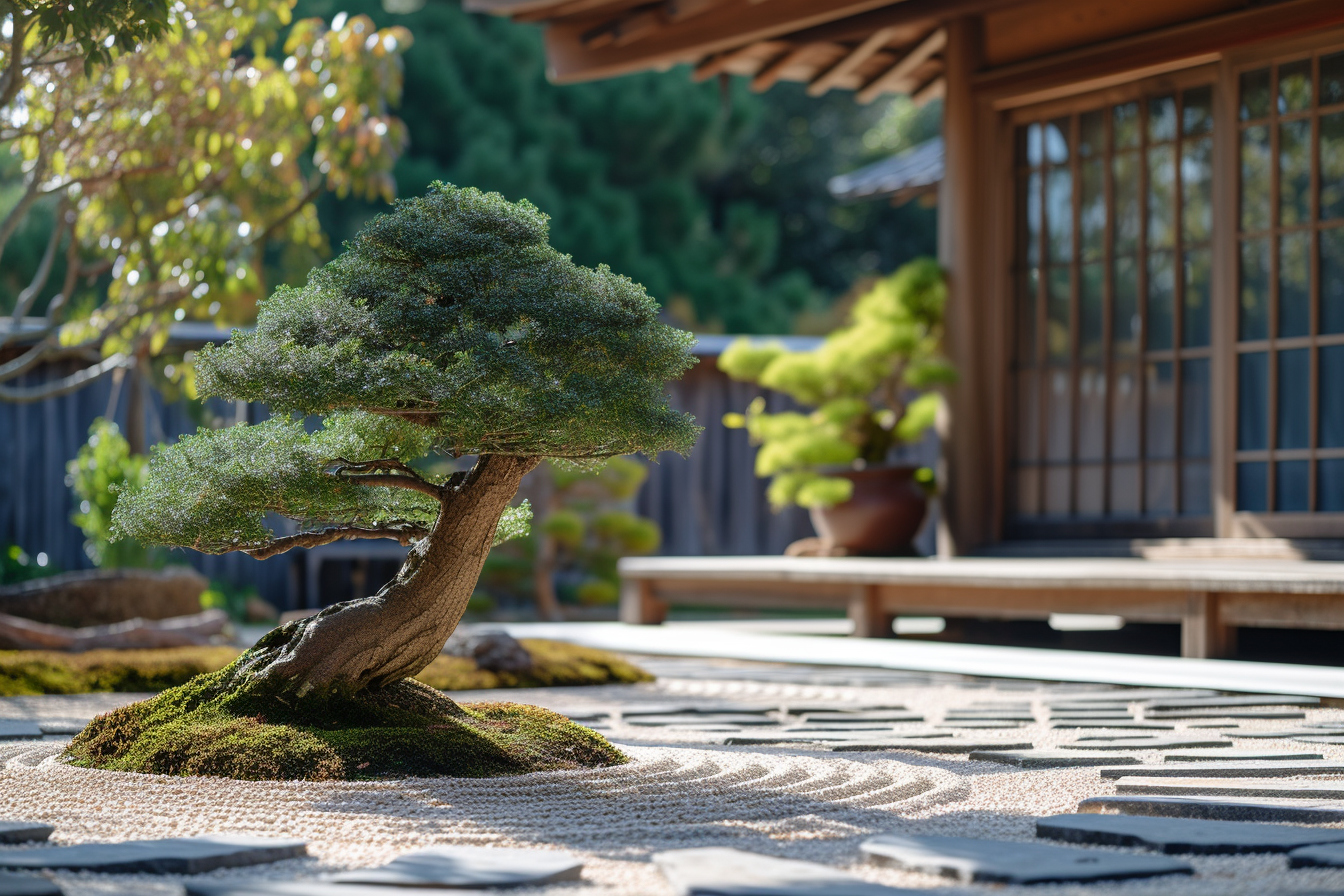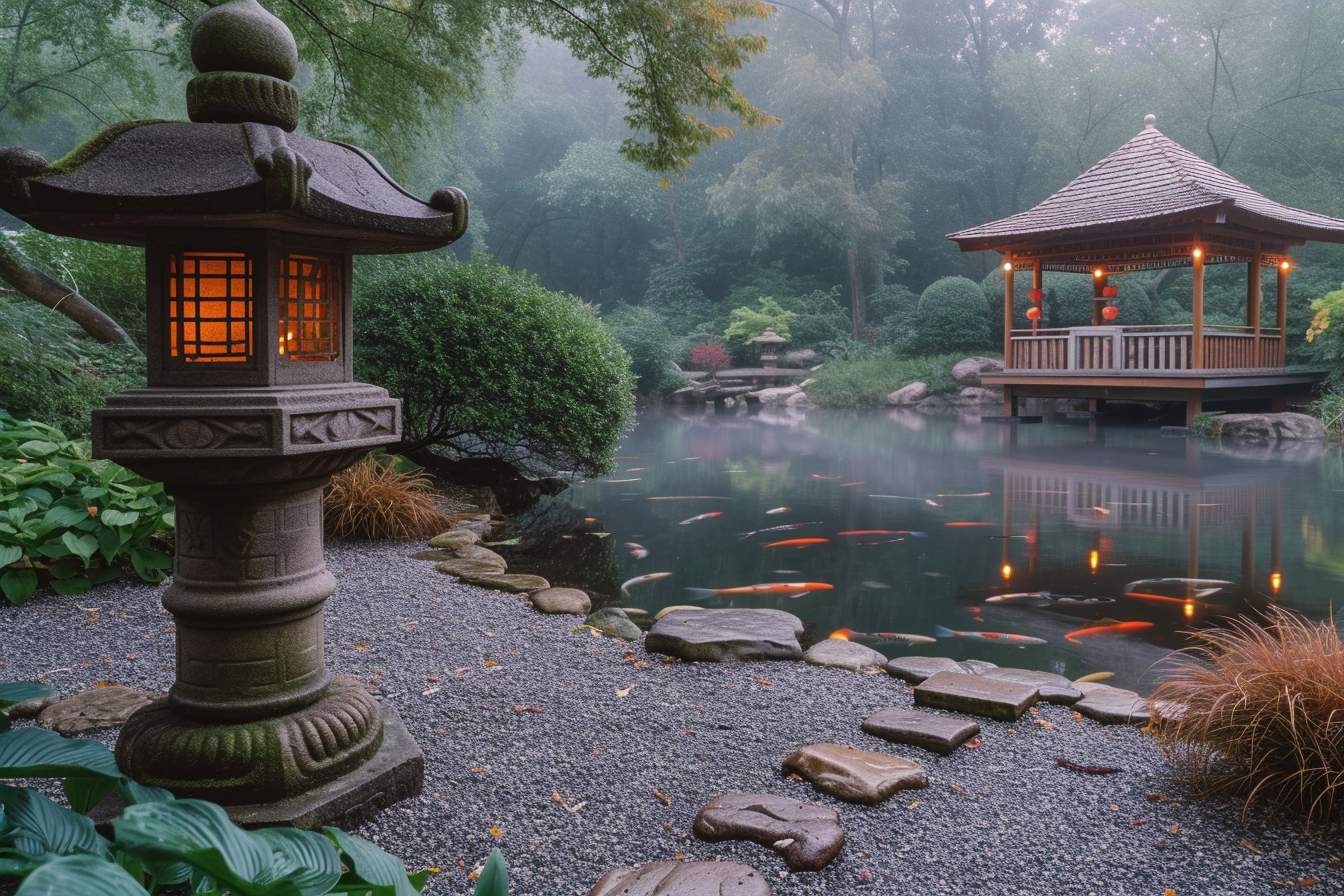Japanese gardens encapsulate tranquility, beauty, and the philosophic teaching of natural harmony. Crafting an authentic Japanese garden is more than just landscaping; it demands an understanding of the culture’s deep-rooted connection with nature and the art of garden design. This article explores key principles and actionable tips to guide you in creating a serene and balanced Japanese garden.
Understanding japanese garden styles
The karesansui (dry landscape)
These gardens, often referred to as Zen gardens, feature carefully placed rocks, gravel, and sand raked into patterns that mimic the essence of water. They are designed for contemplation and reflection.
The tsukiyama (hill gardens)
These gardens incorporate hills and ponds to recreate miniature versions of natural scenery. They often feature paths meandering through the landscapes, bridges, and sometimes, waterfalls.
The chaniwa (tea gardens)
Designed for the tea ceremony, these gardens feature tea houses and are created with a focus on subtlety and a natural appearance. Stepping-stones and lanterns are common elements.
Elements of japanese garden design

There are certain elements central to a Japanese garden’s design, each symbolizing different aspects of nature and spirituality.
Rocks and stones
Rocks are the bones of the Japanese garden. Choose stones carefully for their shapes and textures. They represent islands or mountains and are often placed in groups with odd numbers.
water
Water is considered the lifeblood of the garden, signifying purity and renewal. If a pond or stream is not possible, alternatives such as dry water landscapes (using sand or gravel) can be utilized to represent water.
plants
Select plants that change with the seasons to reflect the ephemeral nature of life. Evergreens are favored for their year-round presence. Maple trees frequently feature for their stunning fall colors, while azaleas and cherry blossoms bring springtime splendor.
Garden ornaments
Lanterns, basins, and pagodas are more than just decorative. They serve specific purposes, such as providing light, a place for ritual cleansing, or as focal points in the garden landscape.
bridges
Bridges symbolize the journey from one world to another, a recurring theme in Japanese gardens. They can be simple wooden structures or elaborate arched bridges, depending on the size and style of your garden.
Design principles to follow
Asymmetry (fukinsei)
Balance rather than symmetry is paramount in Japanese garden design. Asymmetry, found in nature, is emulated to create a landscape that feels both balanced and organic.
Enclosure (kekkai)
Enclosure creates a sense of serenity and isolation. Use fences, hedges, or bamboo screens to define the garden space and to provide privacy.
Borrowed scenery (shakkei)
Incorporate surrounding landscapes into the design of the garden. Whether it’s a distant mountain, trees, or buildings, merged views add depth and create the illusion of a larger space.
Simplicity (kanso)
A Japanese garden should not overwhelm the senses. The design should be simple and natural, avoiding clutter. Each element should be carefully chosen and have a purpose.
Subtlety (yugen)
It’s the suggestion, rather than the explicit, that elevates the aesthetic of a Japanese garden. Create areas that aren’t immediately visible to instill a sense of mystery and discovery.
Naturalism (shizen)
Mimic the asymmetry found in natural landscapes to convey an untouched appearance. Avoid straight lines and geometric shapes in favor of organic, curving paths.
Steps for creating your garden
Start with a detailed plan
Map out your garden, taking into account the available space, your preferred style, and the principles mentioned above. Decide where each element will go, from rocks and water features to plants and ornaments.
Choose the right plants
Select plants that are suitable for your region’s climate and that will also provide seasonal interest. Familiarize yourself with the growth habits of these plants to ensure they can be maintained in the desired form.
Incorporate water or its representation
Use a water feature, such as a koi pond or stream if possible. If not, create a dry landscape garden, using sand and rocks to symbolize water and its flow.
Add paths and bridges
Design paths that invite exploration and reflection. They should meander, allowing visitors to take in the garden from different perspectives. Bridges add a decorative and symbolic element to the garden.
Install lanterns and basins
Carefully position lanterns to light the garden in the evening. Water basins can be used for purification before the tea ceremony or as a focal point.
Maintenance considerations
A Japanese garden is a living work of art and, as such, requires regular maintenance. Pruning is crucial in keeping with the natural yet ordered aesthetic. Raking gravel and removing fallen leaves are also important to maintain the intended design.
Embracing the concepts of an authentic Japanese garden invites peace and reflection into your outdoor space. While exact replication may not always be feasible, the principles and design elements can be adapted to various spaces and climates, creating a tranquil garden that transcends boundaries and invites contemplation. Whether you have a small backyard or vast land, integration of these tips could result in a serene escape that honors the timeless traditions of Japanese garden design.

Leave a Reply